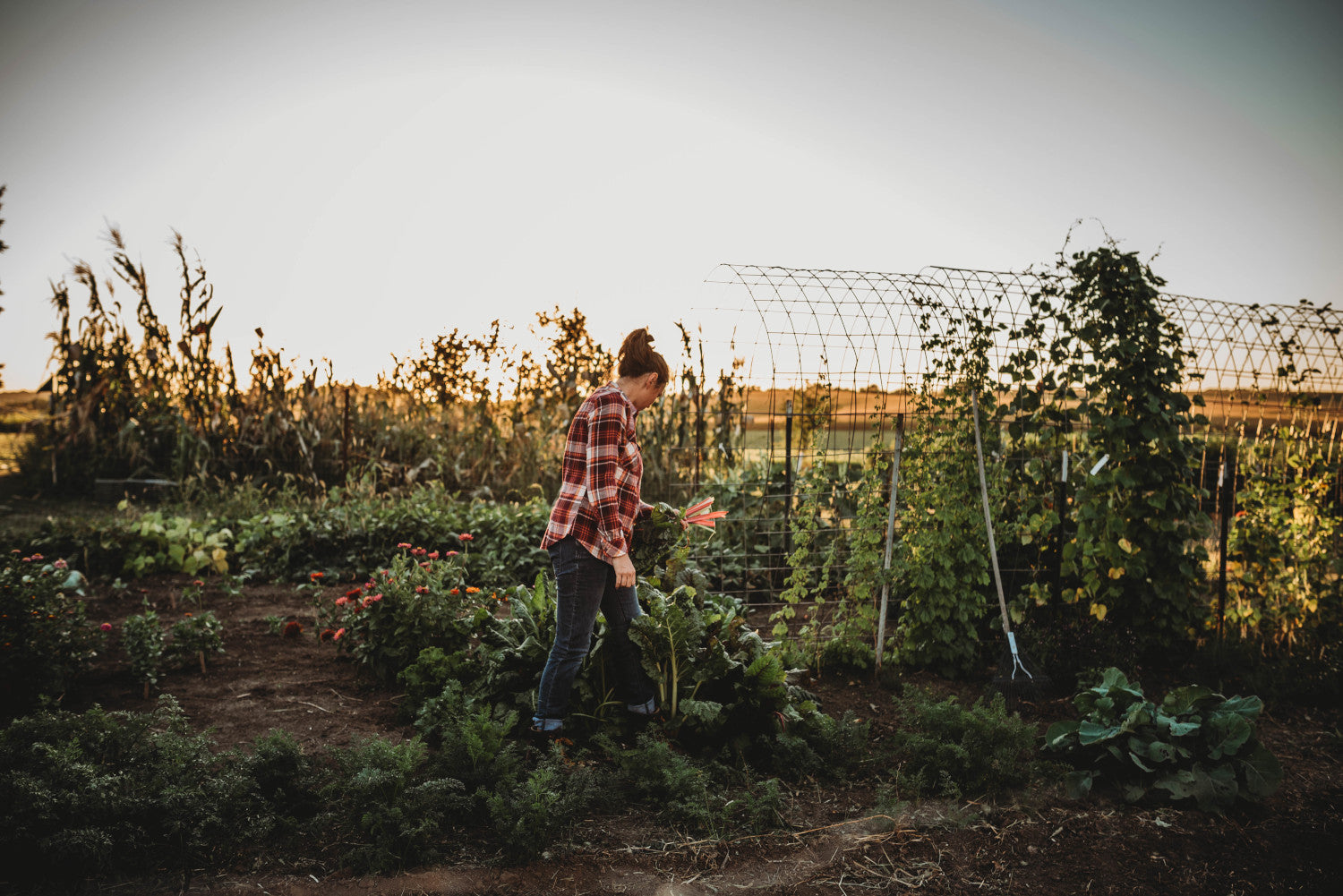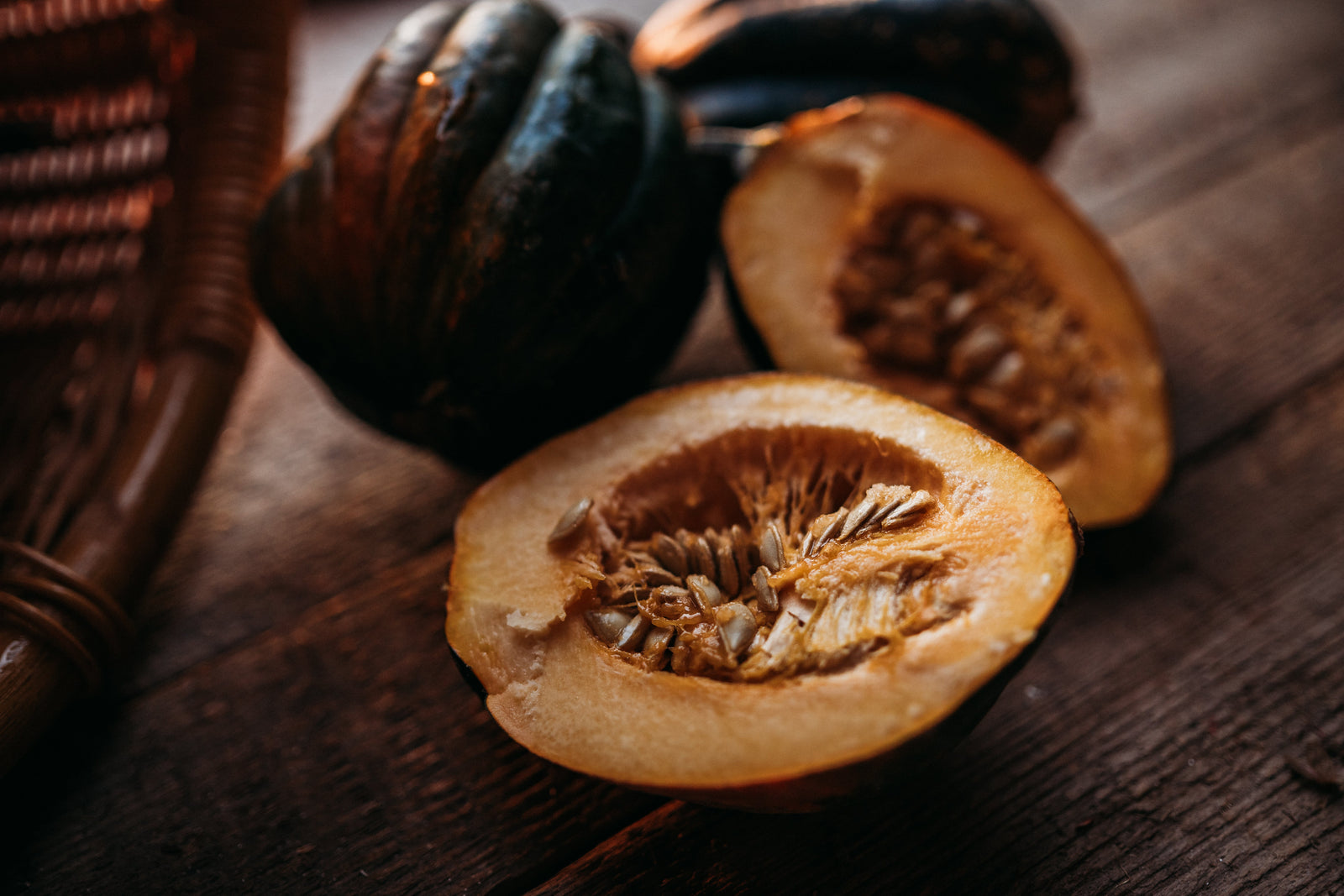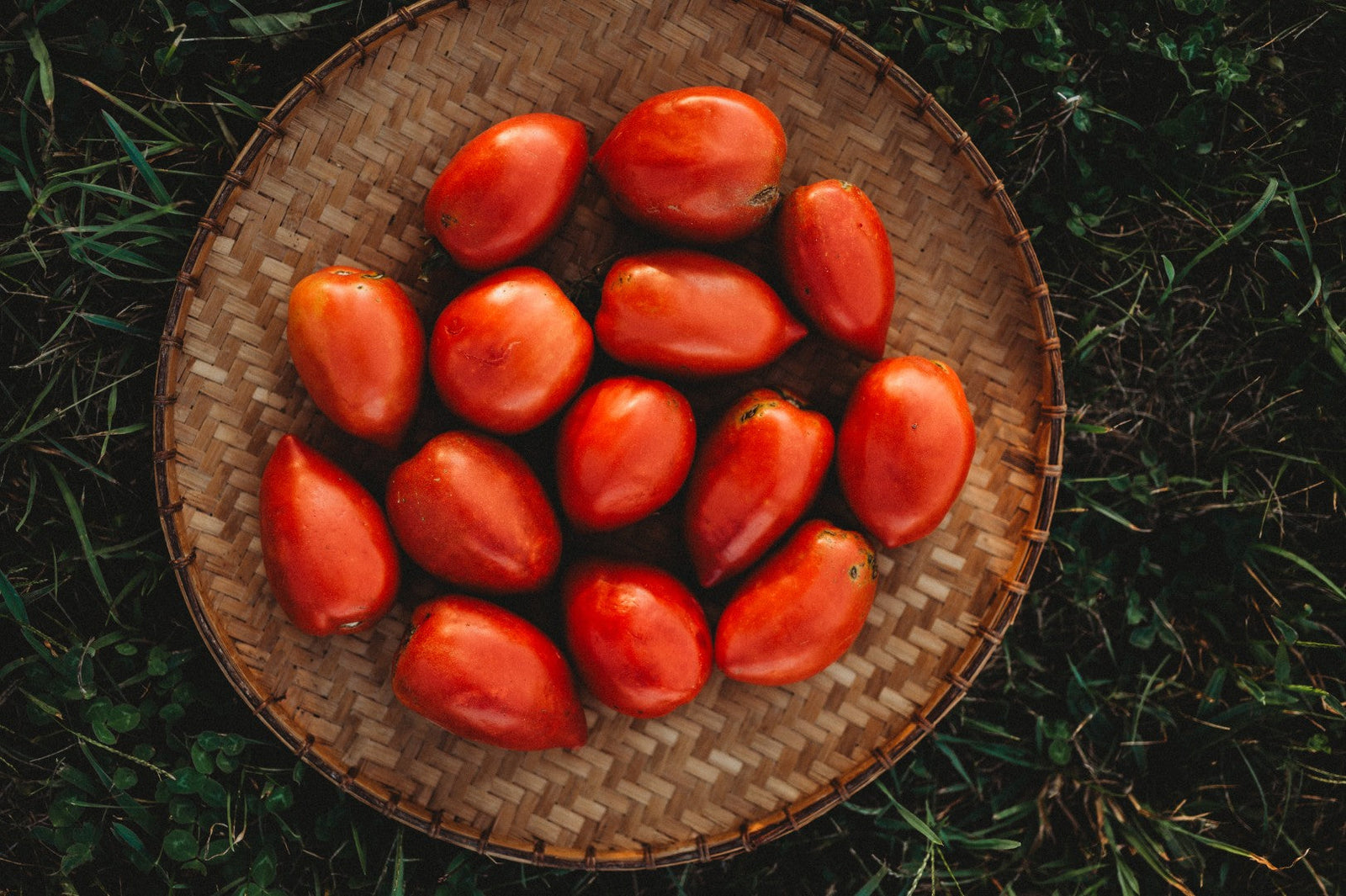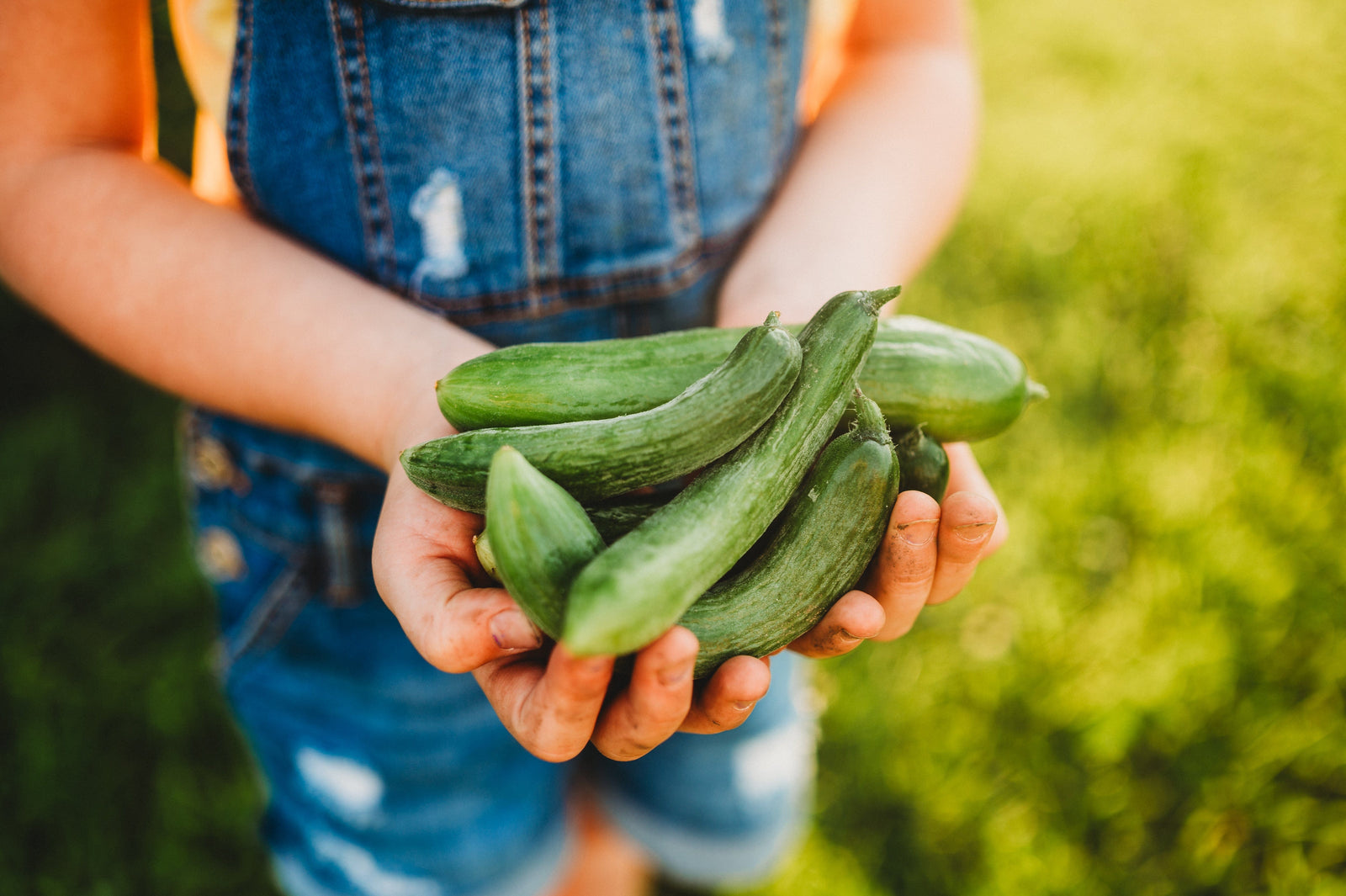I’ll take it!—with those three words I started a new phase of my life. It was December and I was interviewing for my first job after finishing graduate school. The owner of the company had graciously offered me a meeting two days before Christmas, so I drove down and made my pitch. The interview went well, it seemed, and afterwards we found ourselves talking about gardening. I mentioned that I loved to garden and dreamed of one day having a huge garden space. He replied, “I’ll tell you what—I’ll give you a job and a huge garden.”
Well of course I accepted, and soon enough I was dragging the tiller around our new 100’x 230’ gardening plot. Now, if you've gardened for a while, I imagine you're laughing at me right now. That's alright, I deserve it. Well, the garden wasn’t a disaster per se. It couldn’t be (Did I mention that this was my boss’ personal garden?) So that spring, I spent every moment of free time weeding and planting—nearly 200 tomatoes, 100 peppers, hundreds of row-feet of beans and dozens of hills of squash and cucumbers. By midsummer, my mother-in-law, Sheryl, and I were in a canning frenzy, using most of her 10-burner stove (in a kitchen without A/C, I might add). Exhausted and overheated, we would escape to the front porch and snap beans until our eyes would no longer stay open. It was a fun experience…never to be repeated.
According to Sheryl’s journal, we canned over 800 jars of food that summer, but it seemed like thousands. She later remarked that she got a sinking feeling in her stomach every time she saw me open the trunk of my car. That year, I learned that gardening, like everything else, is best done in moderation. The purpose of this article, therefore, is to help you determine what size of garden is right for you—before you plant. Take it from me, gardening will be more of a blessing, and possibly more fruitful, if you plant an appropriately sized garden. What size is appropriate? The answer will ultimately depend on a number of personal and ever-changing variables. Join me as we consider the many factors that will determine how big of a garden you need, or want.

Your Gardening Experience
When experienced gardeners joke about the exuberance of new gardeners, it’s usually because they have been there themselves. I certainly have gotten in over my head (ahem...on multiple occasions). Still, I never want to discourage anyone from being excited about gardening. If you are thinking about planting your first garden, I say go for it! Make it big enough that you can plant several different things (and therefore guarantee some successes) but small enough to still be manageable. After all, you don’t yet know if you will like gardening and if you go too big, you may sour yourself on what would have otherwise been an enjoyable hobby.

Your Reason for Gardening
What are you hoping to get out of your garden? Are you just looking to spend some time outdoors, do you want to cook with fresh ingredients, or are you looking to become self-reliant and build up your larder? Your reasons for gardening will ultimately play a big role in determining the size of garden you need. For those who are just looking to harvest some fresh food, one raised bed or a few containers may be sufficient. If you are looking to put away food for your family, you may require more. Later in this article, we will discuss how to estimate your needs per person.

Your Stage of Life
A new job, a baby, a job furlough, a big project--every change in life seems to manifest itself as the addition or subtraction of a tiller pass. I've often wished that I had satellite images to document the ever expanding and contracting condition of our gardens as we've moved through different seasons of life. In order for your garden to be successful, its size should be proportional to the time you have (or want) to give it.
My personal experience is that it takes 20-30 minutes per week to weed 100 square feet of garden. It may be more in the spring when it’s wetter or less in summer once the canopy closes, but this rule generally holds true. In fact, I love the 4' by 25' bed size because I know that I can easily find time (before work, during naps, while dinner is cooking, etc.) to weed one bed. It’s also a convenient figure for calculating soil amendments. Determine how much time you have per week to work in the garden and use the 30min per 100sf calculation to come up with a rough estimate for the size you can handle. If you intend to carve out a little time every day, be sure to factor in rain days or days where something else comes up. It can get tiresome constantly playing catch-up on weeding.

The Size of Your Family
How many people are in your family and what are their ages? Do you want to Plant-a-Row for the Hungry and help another family in need? The table below will help you get an estimate of how many plants, or row-feet, you need per person. It is a general estimate for the average adult based on yield estimates produced by the United States Department of Agriculture (USDA, 1977). The actual yield will vary based on variety, soil fertility, growing conditions, etc.
| Vegetable | Approximate Yield per 100' | Planting per Person Fresh | Planting per Person Canning & Freezing |
|---|---|---|---|
|
Beans, snap bush |
120lb | 15-16 feet | 15-20 feet |
| Beans, snap pole | 150lb | 5-6 feet | 8-10 feet |
| Beans, shelling bush | 25lb, shelled | 10-15 feet | 15-20 feet |
| Beets | 150lb | 5-10 feet | 10-20 feet |
| Broccoli | 100lb | 3-5 plants | 5-6 plants |
| Brussels sprouts | 75lb | 2-5 plants | 5-8 plants |
| Cabbage | 150lb | 3-4 plants | 5-10 plants |
| Carrots | 100lb | 5-10 feet | 10-15 feet |
| Cauliflower | 100lb | 3-5 plants | 8-12 plants |
| Corn | 10 dozen | 10-15 feet | 30-50 feet |
| Cowpeas | 40lb | 10-15 feet | 20-50 feet |
| Cucumbers | 120lb | 1-2 hills | 3-5 hills |
| Eggplant | 100lb | 2-3 plants | 2-3 plants |
| Kale | 100lb | 2-3 plants | 2-3 plants |
| Kohlrabi | 75lb | 3-5 feet | 5-10 feet |
| Lettuce | 50lb | 10 feet | - |
| Muskmelon | 100 fruit | 3-5 hills | - |
| Mustard | 100lb | 5-10 feet | 10-15 feet |
| Okra | 100lb | 4-6 feet | 6-10 feet |
| Onions | 100lb | 3-5 feet | 30-50 feet |
| Peas | 20lb | 15-20 feet | 40-60 feet |
| Peppers | 60lb | 3-5 plants | 3-5 plants |
| Potatoes, Irish | 100lb | 50-100 feet | - |
| Potatoes, Sweet | 100lb | 5-10 plants | 10-20 plants |
| Pumpkins | 100lb | 1-2 hills | 1-2 hills |
| Radishes | 100 bunches | 3-5 feet | - |
| Soybeans (Edamame) | 20lb, shelled | 15-16 feet | 50 feet |
| Spinach | 40-50lb | 5-10 feet | 10-15 feet |
| Squash, summer | 150lb | 1-2 hills | 1-2 hills |
| Swiss chard | 75lb | 3-5 plants | 8-12 plants |
| Tomatoes | 100-200lb | 3-5 plants | 5-10 plants |
| Turnips | 50-100lb | 5-10 feet | 5-10 feet |
|
Watermelon |
40 fruit | 2-4 hills | - |

Gardening for Self-Reliance
Have you finally secured that new homestead you’ve been dreaming of? Maybe you have a big backyard that needs a better purpose. Whatever the case, if you have a goal of becoming more self-reliant, you are going to need a more substantial garden space. How substantial? Well, that is a difficult question. It will depend on a number of factors including frost-free days, precipitation, soil fertility, skill of the gardener, number and ages of family members, etc.
In his book, Gardening When It Counts, author Steve Solomon cites the British example of the wartime allotment for getting a rough estimate of optimal garden size. During the second world war, amidst ongoing food rationing and shortages, the British government initiated a Dig for Victory campaign. Local governments were required to supply an allotment of 300 square yards (or 2700sf) to every citizen who wanted one. He estimates that a single allotment probably only produced one-third of a family’s caloric needs, the rest was acquired from rations of bread, dairy, and sometimes meat. But during hard times it made a world of difference.
| How much space does it take to grow all of your own food? |
| If you search the internet, you will find all sorts of answers—from 100 square feet per person (laughable) to 2 acres per person (unrealistic, unless you assume most of this space is for orchards or grazing). If you take Solomon’s example, you’re looking at 8000sf, minimally. I would say that this is probably about right for an individual. Our family garden is roughly this size and it supplies maybe half of the needs for our family of four (our children are still small). If times got tough, I would stretch the output of our garden by allocating more space to calorie-rich, easy-to-store foods like potatoes, corn, cowpeas, and winter squash. Keep in mind that this is just my personal experience growing food in an area that has productive soil, but which suffers hard freezes for several months a year. If you live in a milder climate, you may be able to get by with less because you can grow food year-round. |

In Summary: The Right Sized Garden
Deciding on how big of a garden to cut will depend on a number of factors—most notably, your purpose and objectives for your garden, the nutritional needs of your family, and the amount of time you have available. If this is your first garden, consider starting small, maybe just 200sf, which could easily support a variety of vegetables while requiring just one hour per week for maintenance. Should you find yourself wanting more, you can easily till another pass or add another bed. If you are looking to become self-sufficient, you may want to start a little bigger— and you will eventually need a substantial amount of space-- but try to take it slowly. See what grows well in your area, what your family will eat, and then expand accordingly.






